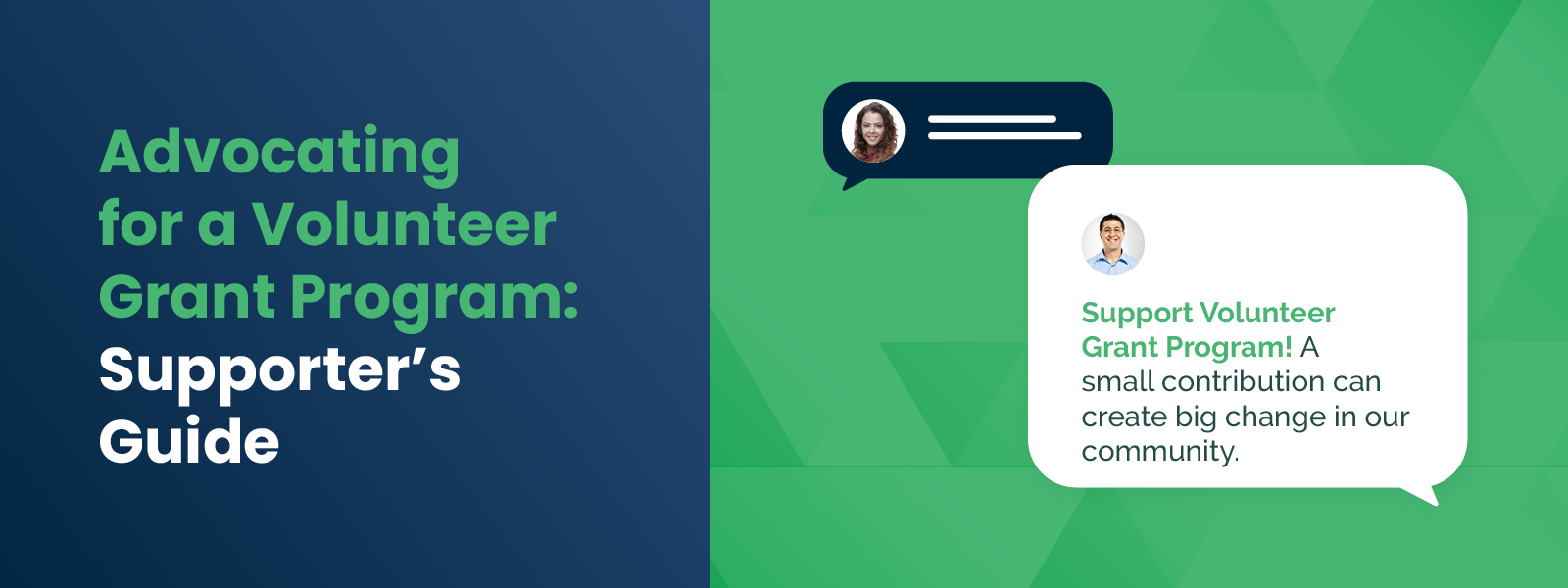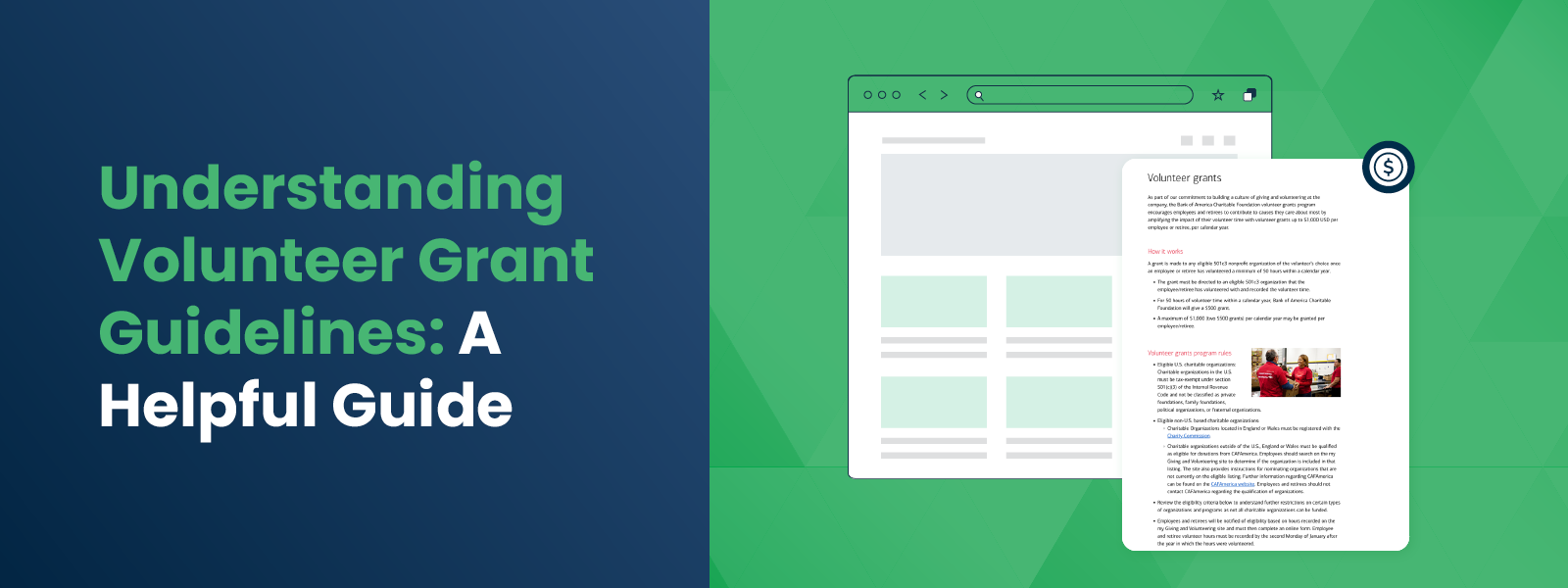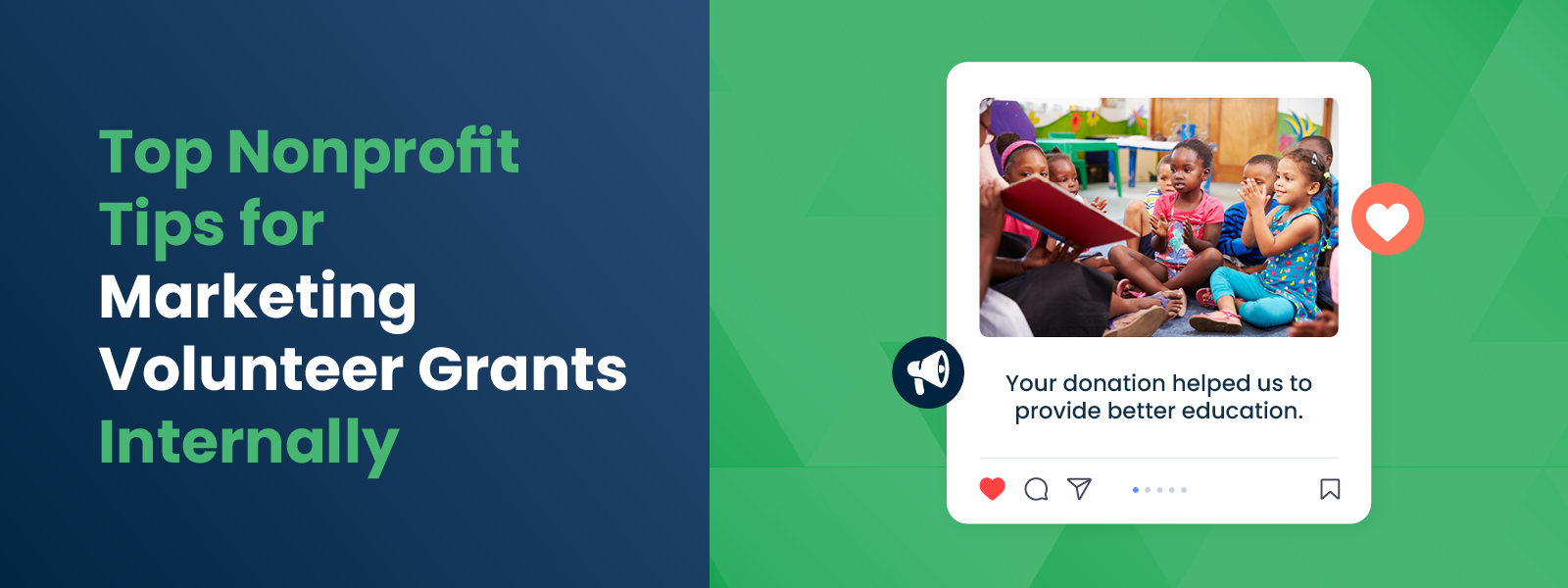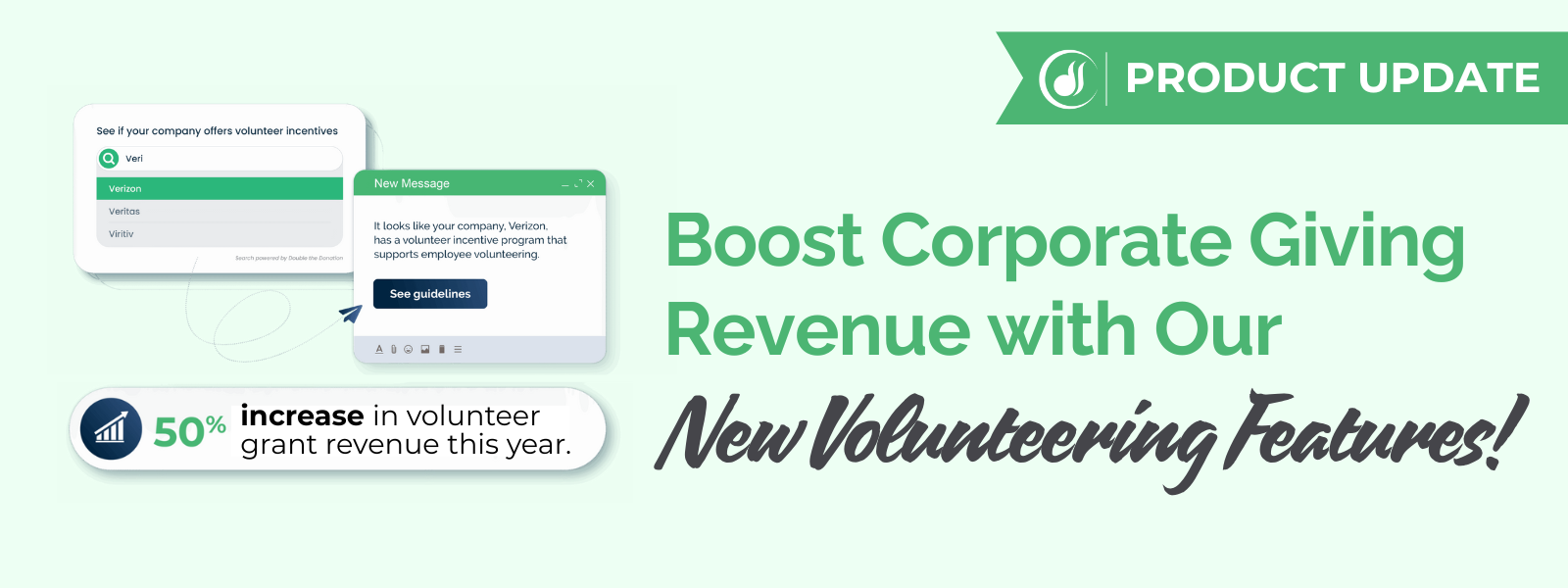
Engaging Corporate Volunteers On Giving Tuesday: Top Tips
Giving Tuesday has become a global phenomenon, synonymous with…

Volunteer Grant Blurbs: Quick Templates To Boost Revenue
For many nonprofits, volunteers are the lifeblood of the organization.…

Advocating for a Volunteer Grant Program: Supporter’s Guide
Your volunteers are the heartbeat of your organization. They…

Understanding Volunteer Grant Guidelines: A Helpful Guide
Corporate philanthropy is a vast landscape, often dominated by…

Top Nonprofit Tips for Marketing Volunteer Grants Internally
Most nonprofits know that volunteer grants are a hidden goldmine.…

Volunteer Grant Letters: Templates to Boost Revenue
Volunteers are the lifeblood of the nonprofit sector, dedicating…

A Smart Nonprofit’s Guide to the Volunteer Grant Process
The lifeblood of any nonprofit organization is the dedication…

Volunteer Grant Requests: The Ultimate Nonprofit Guide
Volunteers are the heartbeat of the nonprofit sector. From stuffing…

Boost Corporate Giving Revenue with Our New Volunteering Features!
The Double the Donation team is excited to announce two major…

How to Market Volunteer Grants at Your Museum
Volunteer grants represent a significant opportunity for museums…

